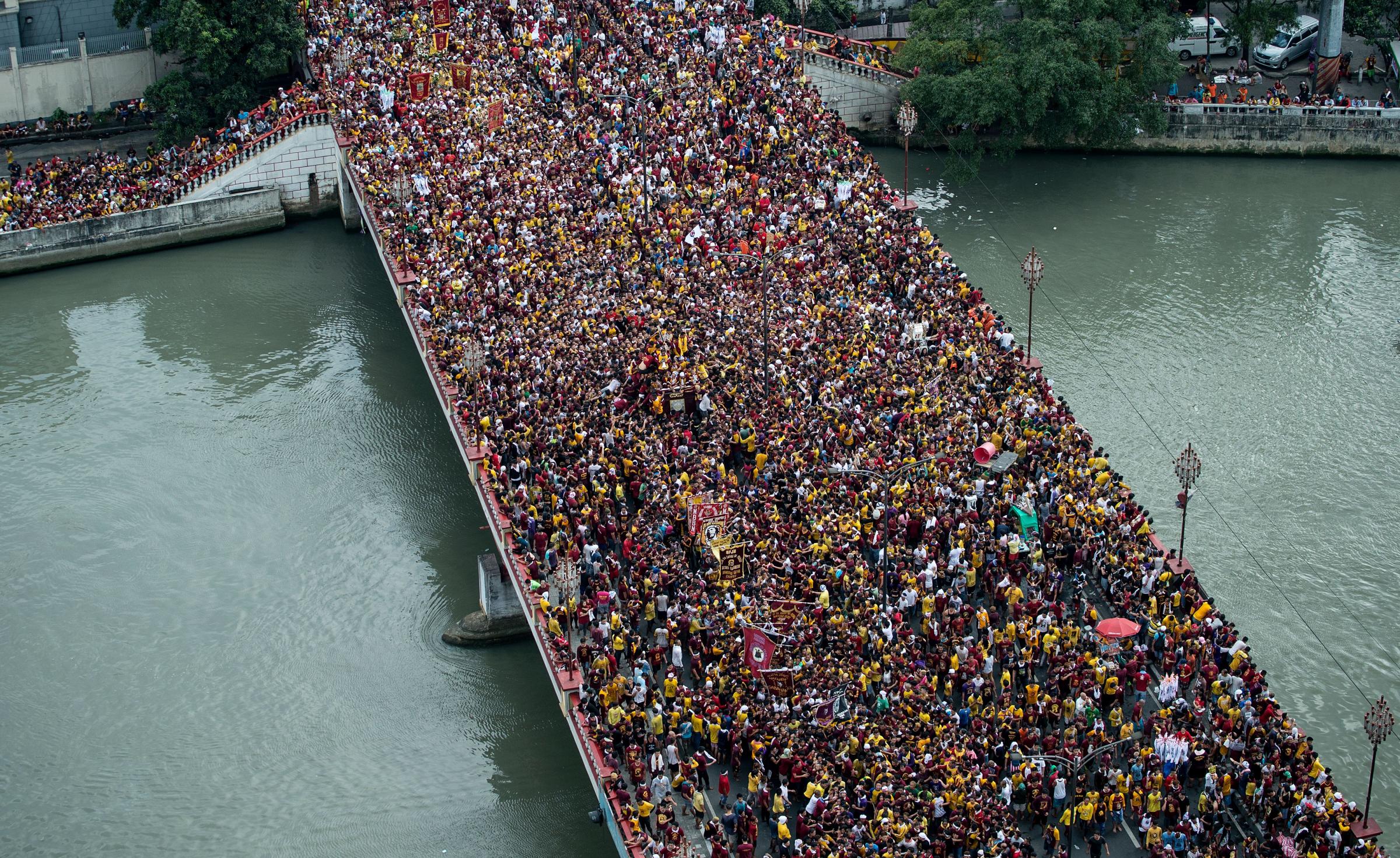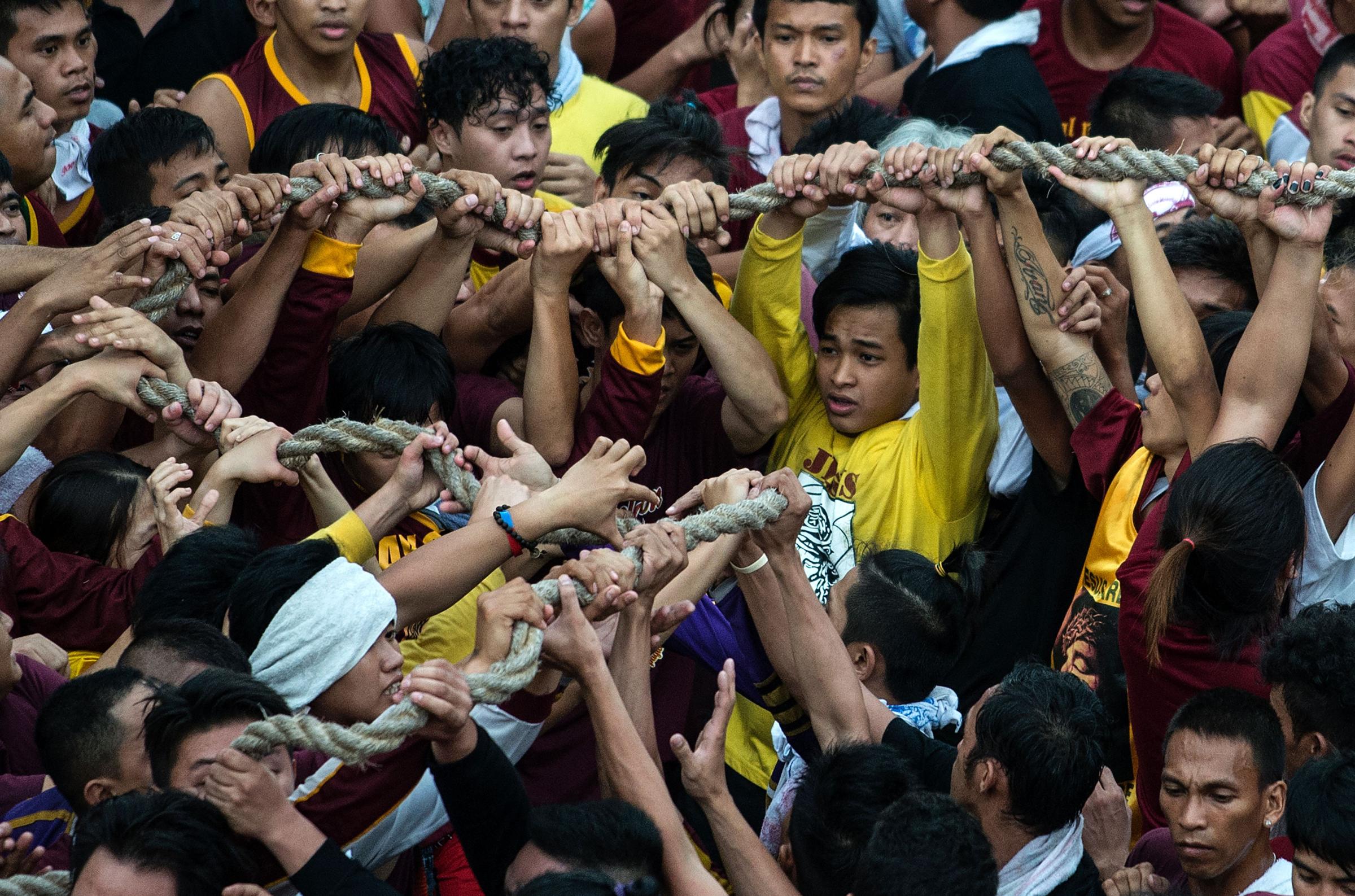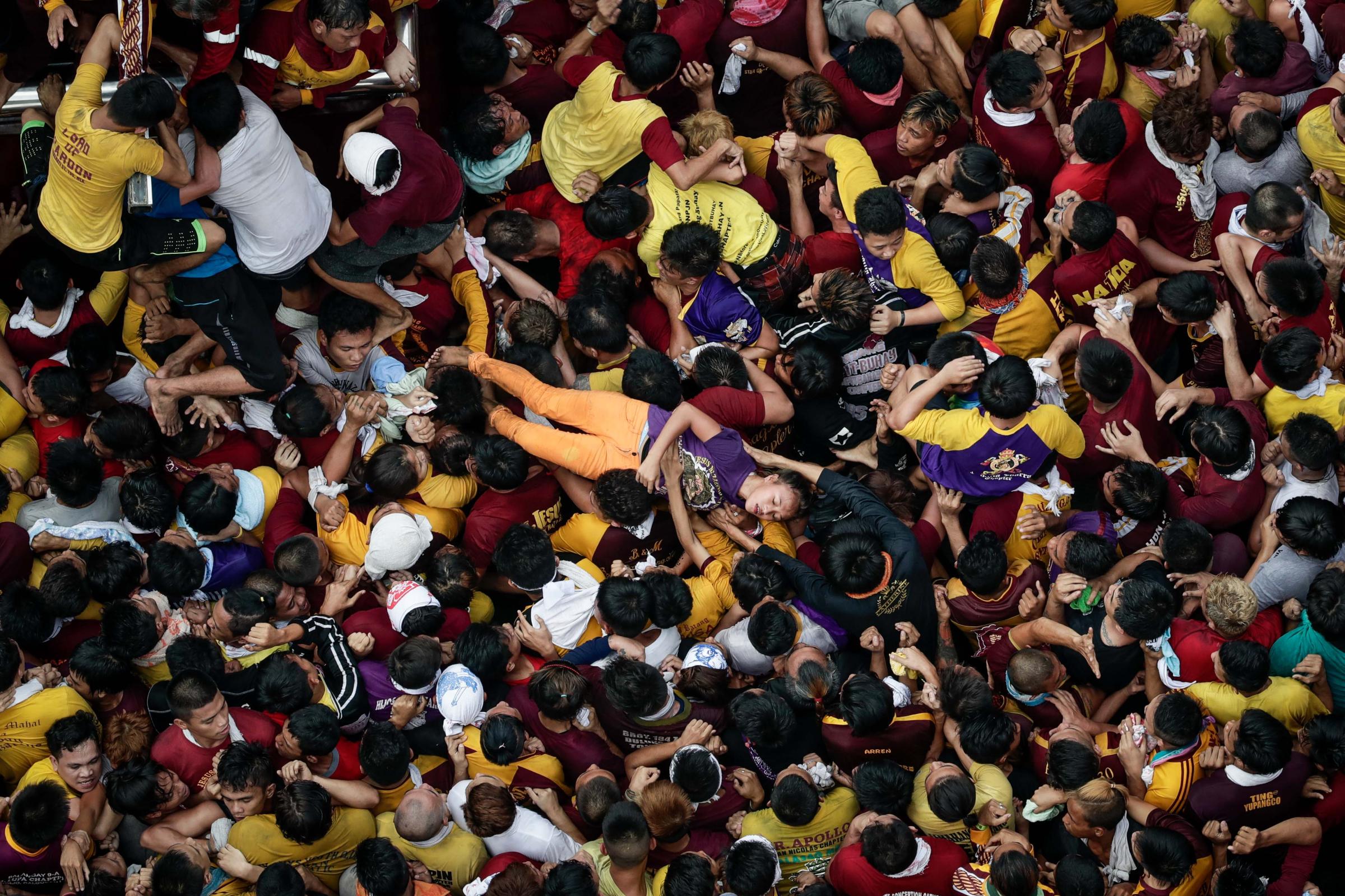
The first time Jeric Narciso held up a jeepney it was because his cousin needed money to give her baby a proper Catholic burial. He hopped aboard one of Manila’s chromed public-utility vehicles and pulled a secondhand .45 pistol he’d tucked under the waistband of his basketball shorts. In the shivering seconds that followed, Narciso scooped up about $300 worth of loot — almost double what he’d paid for the gun and equivalent to an average monthly salary in the Philippines.
It was so easy that he did it again. And again. Even though there were no more nieces to bury. He used the cash to support his family and sometimes he spent it on drugs. Narciso says nobody in the neighborhood filed charges for the string of robberies he committed but police eventually pinned him for possession of an unlicensed firearm. Over the course eight months in prison, Narciso tells TIME, he got clean.
By the time he got out in November, about 20 of his friends and neighbors had been shot dead by police or vigilantes amid Philippine President Rodrigo Duterte’s brutal drug war. Since the President took office on July 1, more than 6,200 suspected drug users and sellers have been killed. “It’s tough: they chose that path,” the 22-year-old says, “I chose a different path this time, I want to straighten out.”
Read More: In Manila, Death Comes By Night
Narciso lives in Quiapo — a neighborhood in the Philippine capital that a local priest says he could “liken to field hospital” for clergy, so many and so urgent are the sins that require divine attention. On Jan. 9, he joined up to 2.5 million devotees seeking redemption at the annual Feast of the Black Nazarene.
The Philippines is home to Asia’s largest Catholic population and the country with third most Catholics in the world after Brazil and Mexico. Like the hajj in Mecca or the Ashura in Iraq’s Karbala, the Feast of the Black Nazarene draws millions of pilgrims: they come to give thanks, to pay penance, and to pray for miracles at the holy procession of a dark-skinned statue of Jesus Christ carrying a cross, which is pulled through the city by long ropes.
Among the pilgrims are thousands of gangsters, crime lords and petty criminals seeking absolution.
“When I pull the rope, I whisper to the Black Nazarene,” Michael Salceda, a local government official and a former user of methamphetamine, which is known locally as shabu, tells TIME, “Prayers for forgiveness for the things that I’ve done.”
The evening before the procession, thousands of families slept on pieces of cardboard on the streets or under parasols at Manila’s Rizal Park, which — with its food concessions, candles and tangled bodies — resembled more a music festival than a religious gathering.
Read More: This Is the Latest Chilling Statistic to Emerge From the Philippine War on Drugs
They come from as far as Davao City on the southern island of Mindanao and from Ilocos Norte at Luzon’s northern tip to hear Cardinal Luis Antonio Tagle, the Archbishop of Manila, deliver a midnight homily on the theme of love and empathy. For most of the year the statue stays in the Basilica Minor in Quiapo, then a few days before the procession it is taken to the Quirino Grandstand, in Rizal Park. At dawn, the devotees follow the Nazareno — the statue’s nickname in Filipino — on its near 24-hour journey from the park back to Quiapo Church.

According to church authorities, the Black Nazarene was carved by an unknown artisan in 16th century Mexico, and there are various stories as to why it is black. Some say it was carved from black mesquite wood, others that it was darkened by smoke from votive candles, and still others that it was charred when the galleon that carried it from the New World caught fire. However it happened, the statue’s unusual color engenders a special devotion according to Monsignor Hernando Coronel, the rector at Quiapo’s Basilica Minor. “You identify, because it’s your color. It’s not alien to you, its not foreign to you,” he tells TIME.
“The Nazareno eases the pain of the Filipinos: the aches, the hurt,” Coronel says. “It’s a little taste of heaven in this cruel, desperate hard time.”
That afternoon of Jan. 9, the bridge approaching Quiapo was thick with hawkers selling white handkerchiefs and vials of holy water.
Groups of devotees in maroon shirts bearing the names of their neighborhoods passed soldiers in fatigues toting M16s. Their aim was to get as close to the Black Nazarene as possible, and that required bare feet — footwear would be torn off in the melee.
Read more: The Fighter: How Leila de Lima Ended Up Leading the Opposition to Rodrigo Duterte’s Drug War
At Dasmarinas Street, the throng tightened and TIME caught up with the Nazarene proper. As the carriage judders between the grime-caked buildings hemming the street, thousands of devotees whirled white handkerchiefs over their heads and chanted “viva, viva,” while the crowd surged forward attempting to touch the statue of Jesus. As the carriage drew closer still, they tossed their handkerchiefs up to the Hijos del Nazareno (Sons of the Black Nazarene) — marshals from the Minor Basilica — who brush them against the Nazareno before throwing them back at their owners for luck.
Inside the churning crowd, rows of devotees crossed their arms to protect their chests from the sea of people. Many tried to grab the rope, others scrambled over shoulders in a bid to mount the platform. Those who made it onto the carriage pressed their lips to the cross, their arms tightly wrapped around the statue as they jolted forward.

To pull the ropes hauling the Black Nazarene through the city every Jan. 9 is a popular form of panata — an act of penance or holy devotion often undertaken as a repayment to a prayer that was answered. Other instances of penance in the Philippines include self-flagellation, or re-enacting the crucifixion by driving steel nails through the palms and feet on Good Friday.
For the former armed robber Narciso, pulling the Nazarene is a way to give thanks for getting straight and to pray for the recovery of his elder sister who had tuberculosis, he says. Since leaving jail he has taken numerous odd jobs, from selling fruit at the market to arranging fake diplomas for people, to support his family. He says he no longer keeps a gun and steers clear of drugs. “It feels good to do it the right way,” he tells TIME, “it feels good that my family and people around me can see my improvement.”
And for the local government official, Salceda, his panata consisted of saying prayers to avoid slipping back into habits that could cause “someone to break into my house and kill me.”
A plump man in a T-shirt with pictures of cartoon swordfish, Salceda confides that although his faith is strong he worries about being accused of taking shabu again. “It would be O.K. if they just arrested you. But they make up stories that you fought back against the police, and then they shoot you,” he tells TIME, referring to police antidrug operations that have been accused of carrying out extra-judicial killings.
The procession, which snakes through winding streets and swells by the hour into the millions, poses a massive challenge to medics and security forces. This year, the Philippine Red Cross treated almost 2,000 people for hypertension and dizziness, among other ailments. Last year, two devotees died during the procession, and two more devotees were killed in 2015.
But it’s not only stampedes and exhaustion authorities have to be concerned about. After the leader of a separatist Islamist organization was recently killed in the country’s south, and following an ISIS-linked attempted bombing outside Manila’s U.S. embassy in November, rumors that terrorists would attack the Feast of the Black Nazarene haunted the procession. In response, police banned backpacks and blocked cellphone signals along its route.

“God is with us,” the chief of the Philippine National Police (PNP) Ronald dela Rosa assured devotees the Friday before the procession, local TV network ABS-CBN reported. The PNP, the armed forces and the coast guard dispatched almost 6,000 personnel to the event and loaded rooftops with snipers.
Despite the millions that descend on Manila and the thousands of criminals that came to Quiapo seeking redemption, during the Feast of the Black Nazarene the crime rate dips dramatically. On Jan. 9 it apparently hit zero. “On the actual date we have not recorded any crime: nothing on snatching, nothing on robbery,” National Capital Region Police Office chief Oscar Albayalde tells TIME.
By contrast, Metro Manila averaged 56 robberies, 135 thefts, three “car-nappings” and 17 “motorcycle-nappings” per week for the second half of 2016.
Albayalde chalked up the absence of crime — which also reportedly happens when boxer Manny Pacquiao fights — to the focus of the devotees. But he also attributed it to Duterte’s campaign against illegal drugs. Thousands of street killings have taken place since the President took office on July 1 — mostly of small timers like Narciso in neighborhoods like Quiapo. The Philippines will also shortly vote on whether to reintroduce the death penalty for crimes including drug possession, and another law being mulled proposes lowering of the age of criminal responsibility to just 9 years old.
Read More: The Killing Time: Inside Philippine President Rodrigo Duterte’s War on Drugs
“There’s 3 million drug addicts,” the President said last year, citing a number at odds with the findings of the country’s Dangerous Drugs Board, “I’d be happy to slaughter them all.”
His approach, of course, contrasts the doctrine of the Catholic Church, whose Filipino members will stage a “Walk for Life” on Feb. 18 to oppose drug-related killings.
At just after 3 a.m. on Jan. 10, the Black Nazarene made it home to Quiapo’s Basilica Minor. On the palisades in front of the church hang red banners proclaiming the fifth commandment of the Catholic catechism: “Huwag Kang Papatay,” it reads. “You Shall Not Kill.”
Eduardo Alegria, a skittish recovering drug addict who makes a living scavenging from trash, had helped drag the Nazareno on a portion of its journey. “It is really hard pulling the rope. You run out of energy. I pushed myself to my limit just to be able to hold on,” he tells TIME. “When I see the Nazarene, I see God. You have challenges in life … and doing this gives me strength.” Then, alongside his fellow devotees — some exhausted, some ecstatic — Alegria spills from the church back out into the streets.
*Descriptions of Jeric Narciso’s criminal history are based on his own account and could not be independently verified by TIME.
More Must-Reads from TIME
- Donald Trump Is TIME's 2024 Person of the Year
- Why We Chose Trump as Person of the Year
- Is Intermittent Fasting Good or Bad for You?
- The 100 Must-Read Books of 2024
- The 20 Best Christmas TV Episodes
- Column: If Optimism Feels Ridiculous Now, Try Hope
- The Future of Climate Action Is Trade Policy
- Merle Bombardieri Is Helping People Make the Baby Decision
Write to Joseph Hincks / Manila at joseph.hincks@time.com